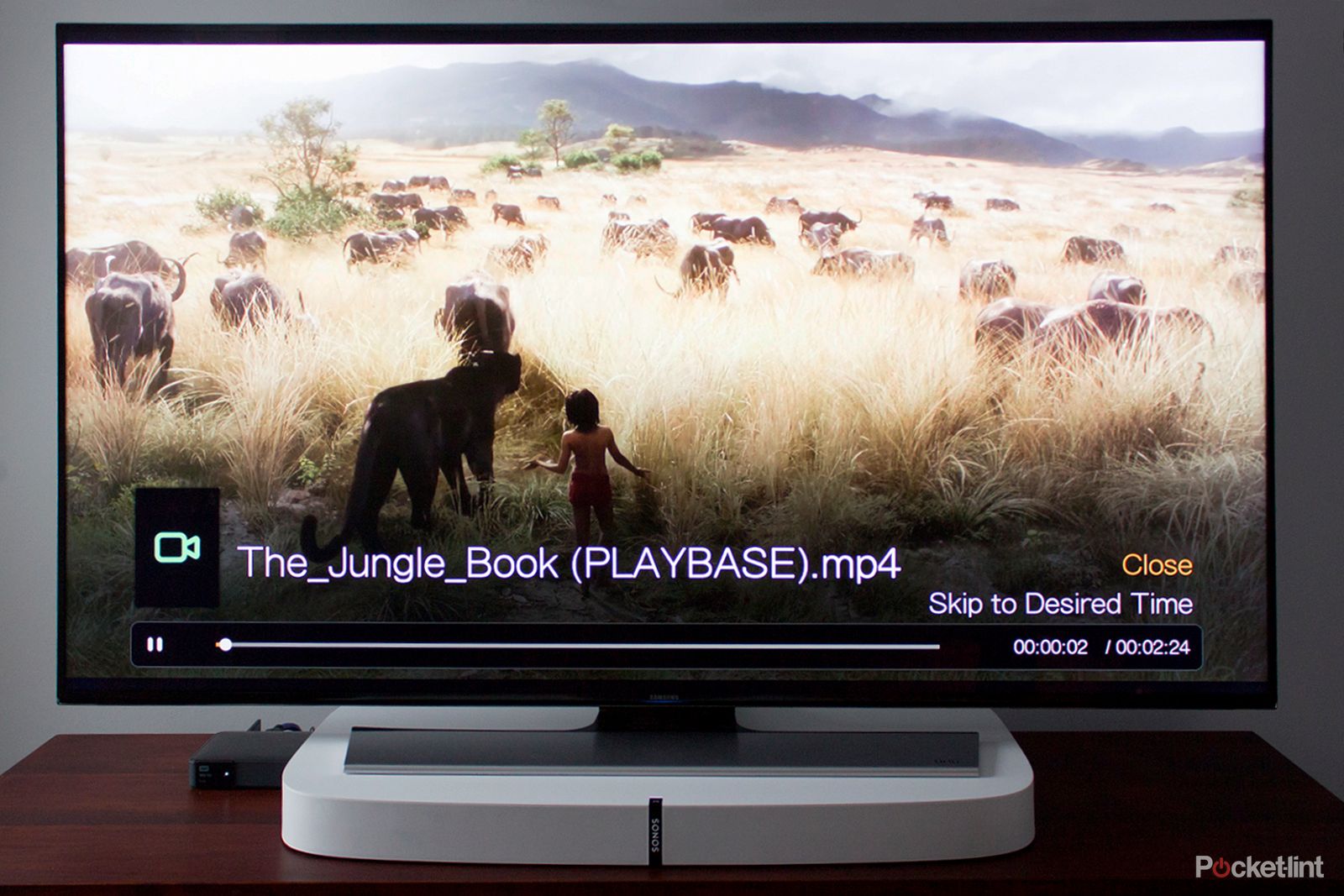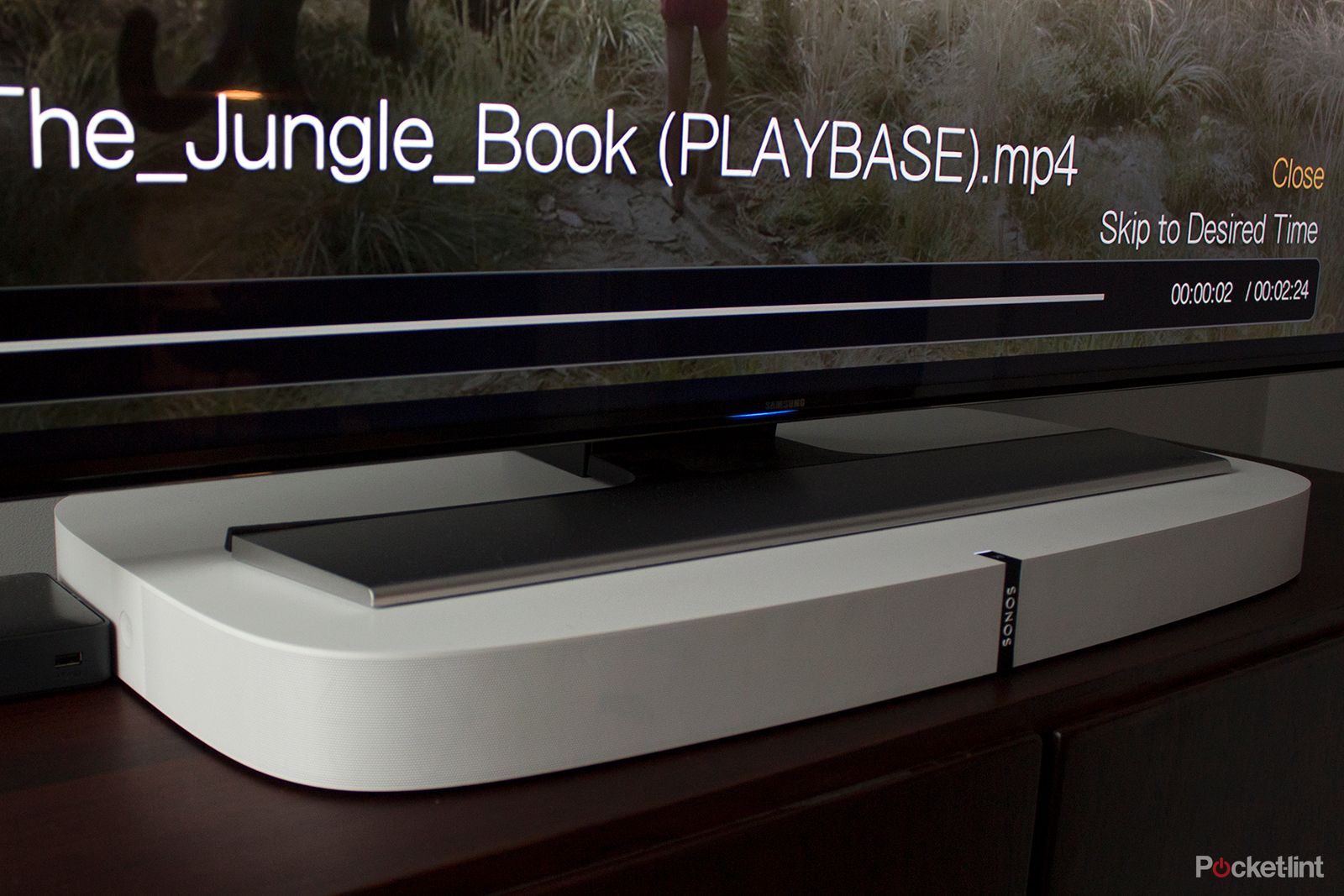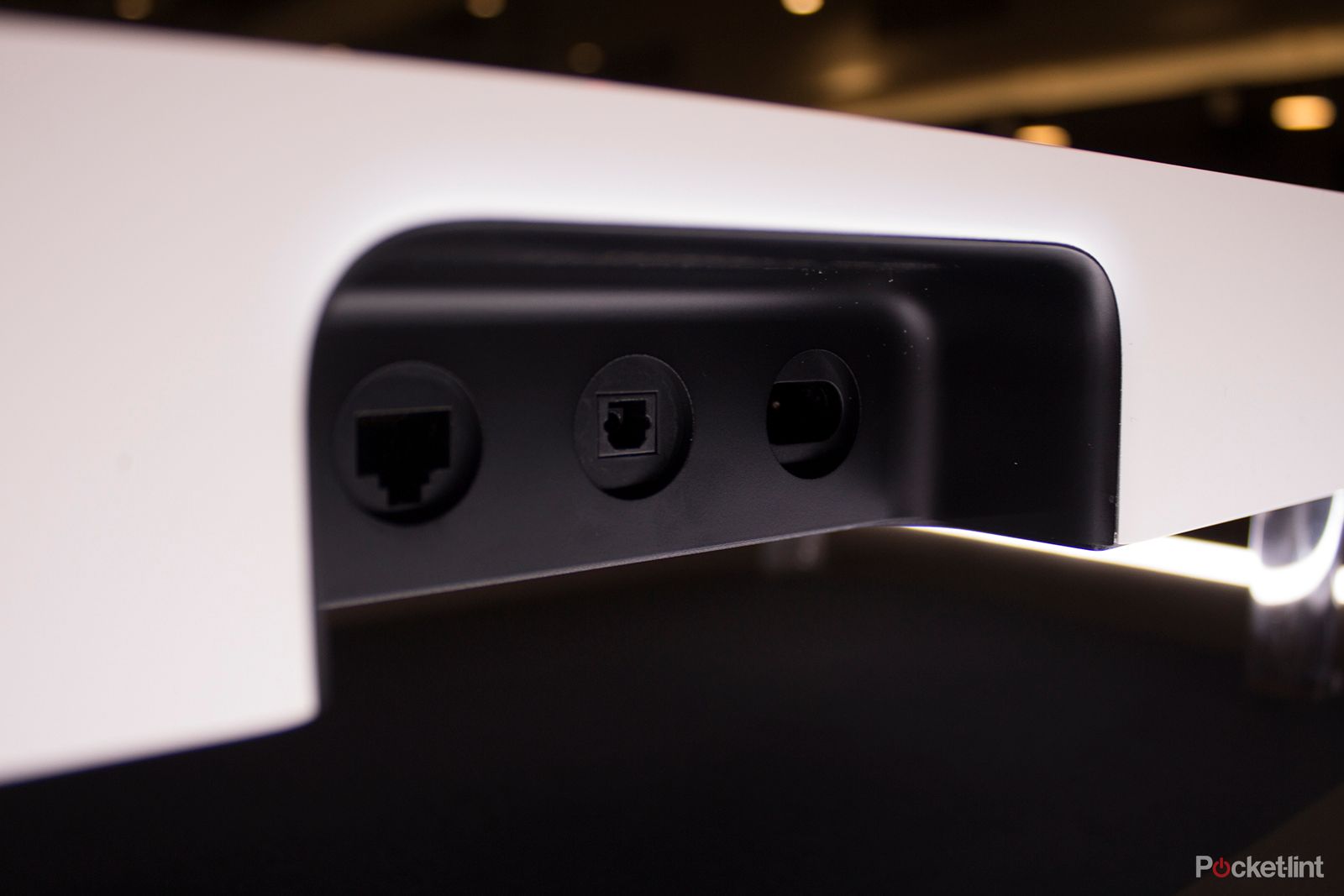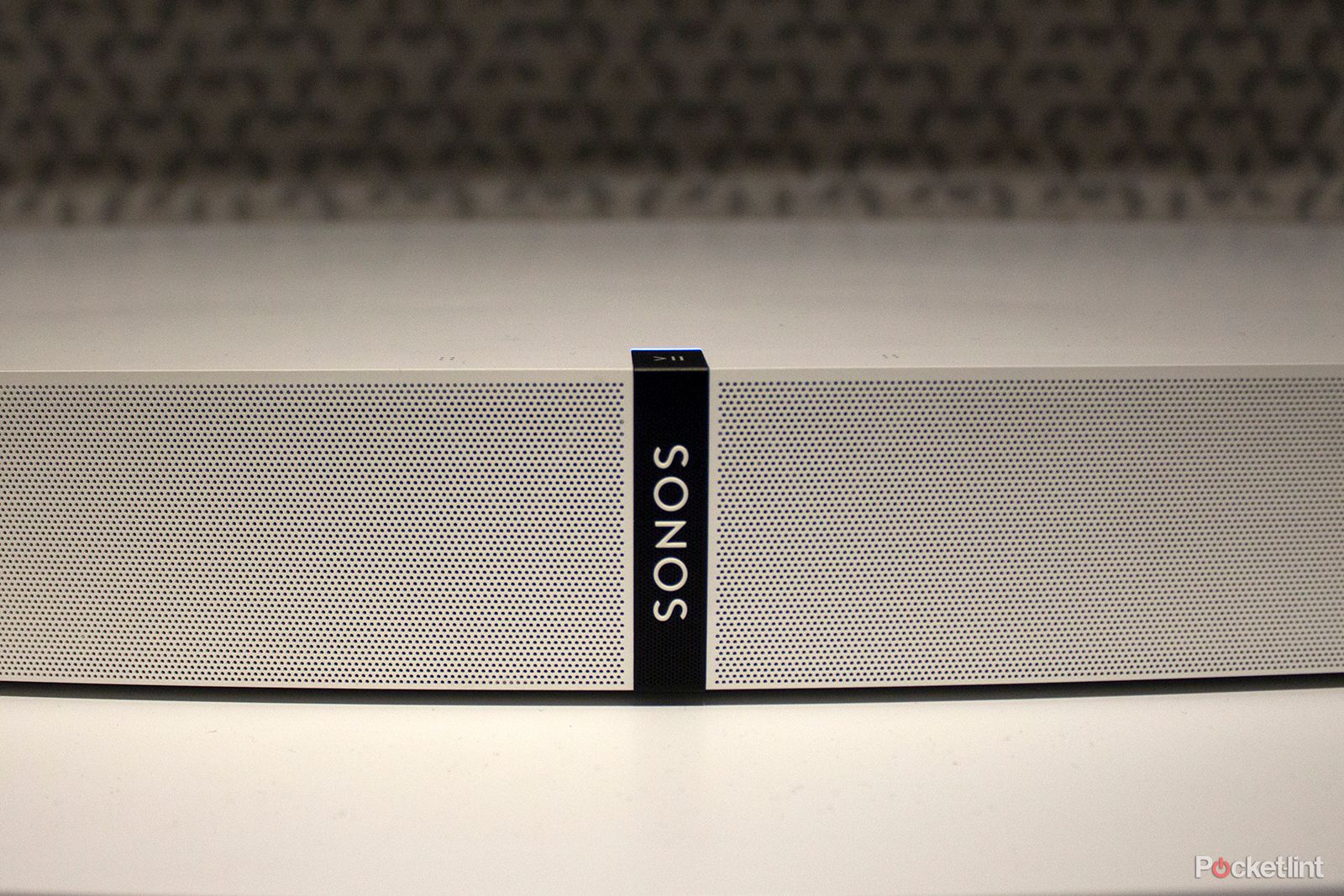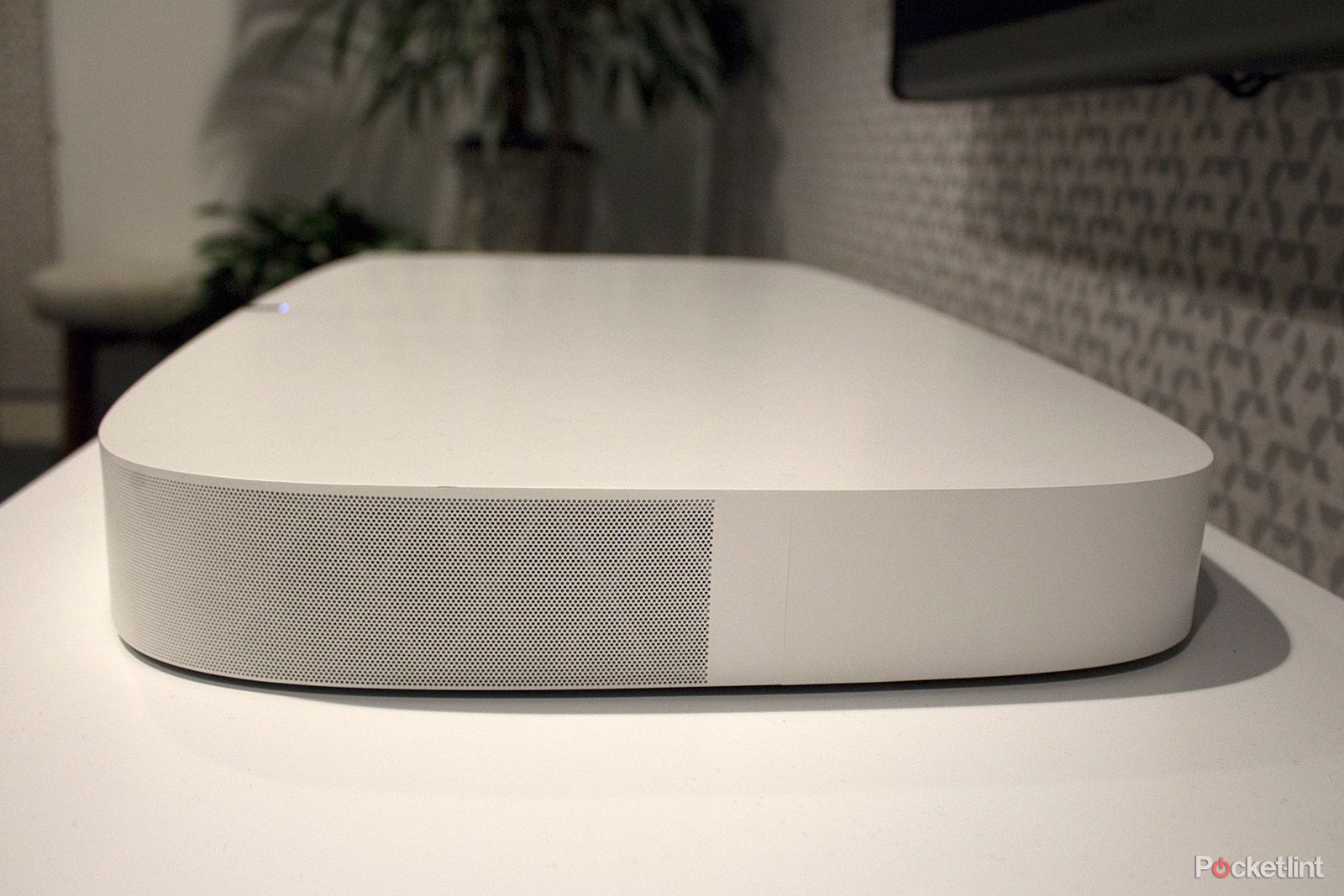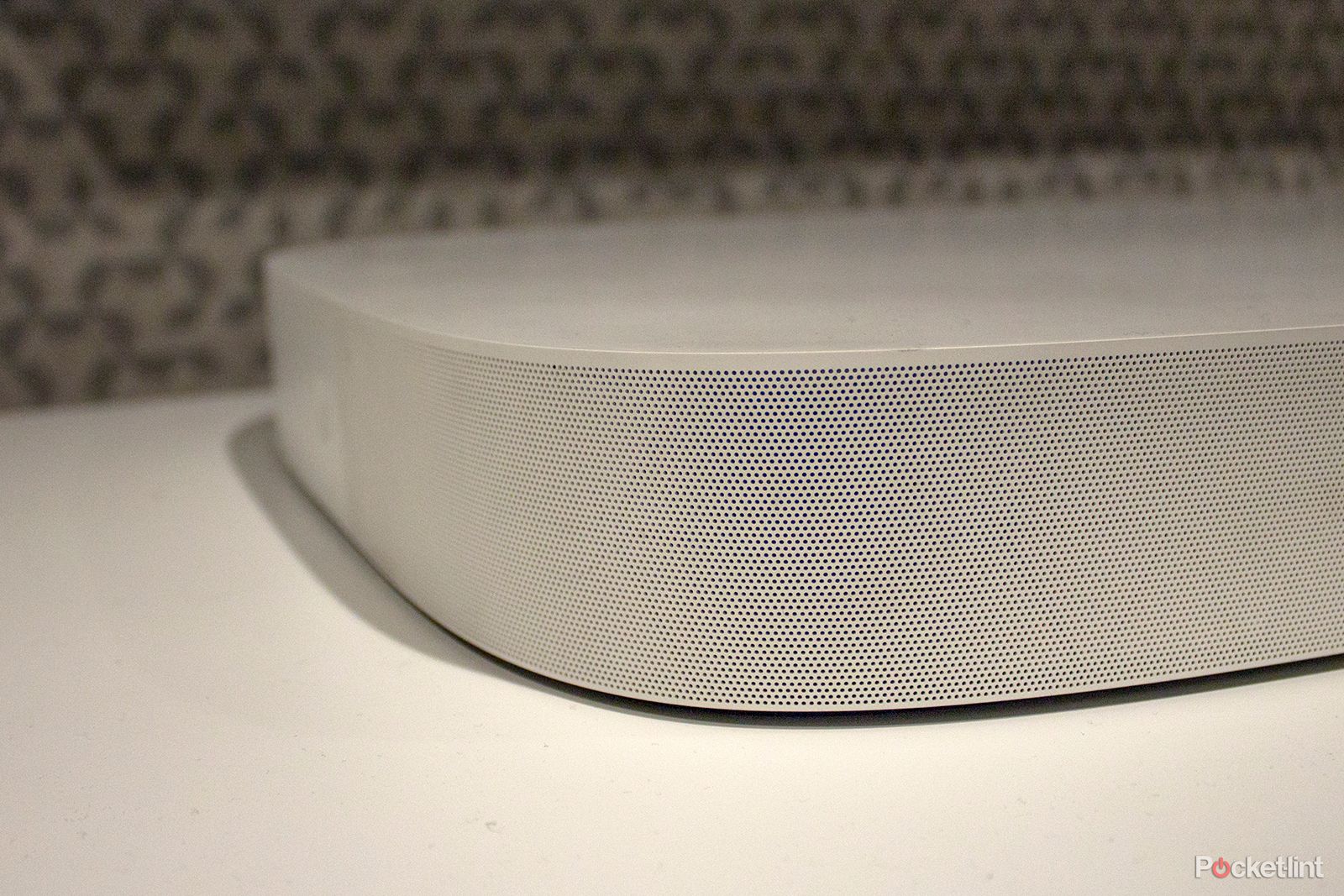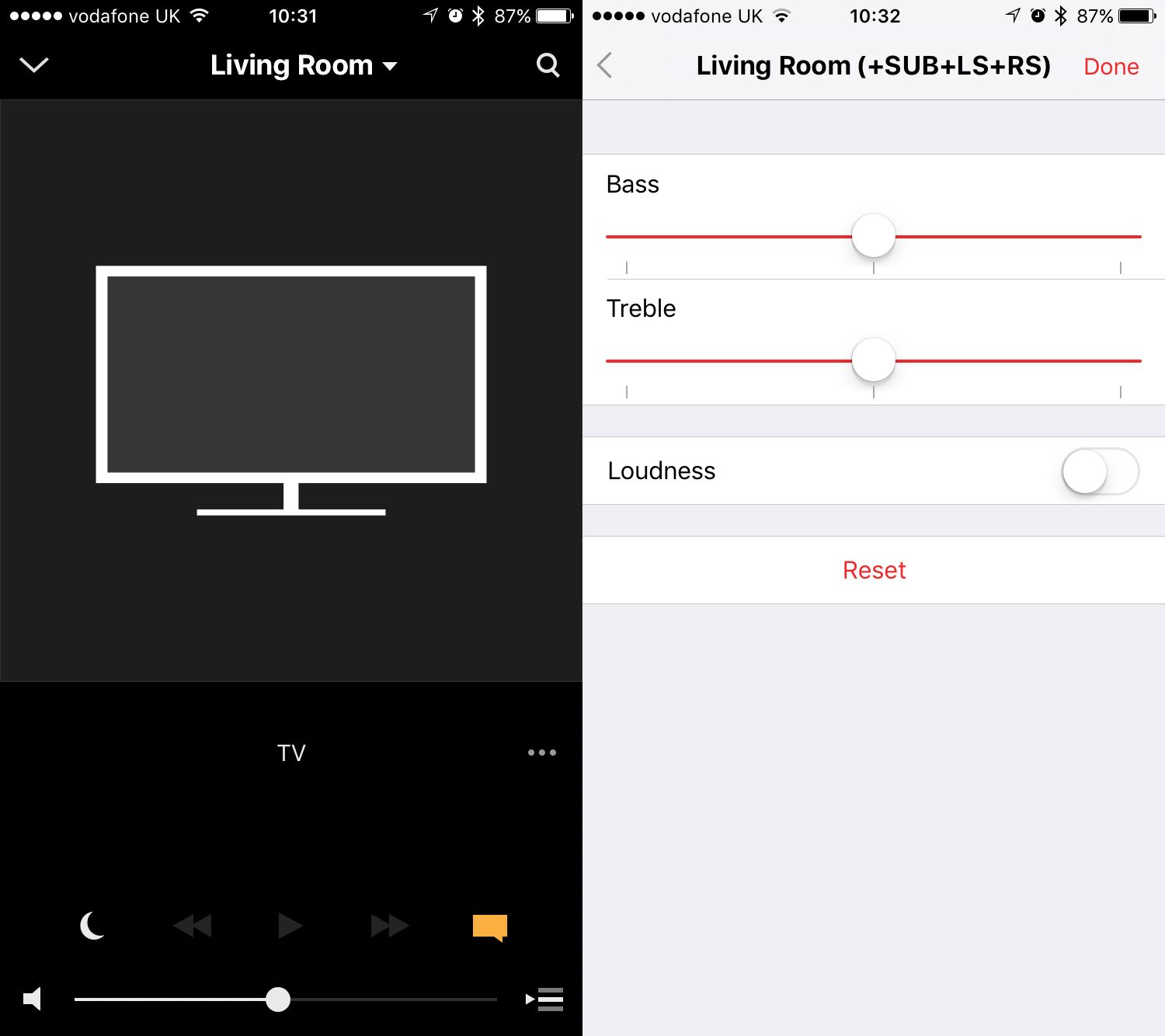Sonos doesn't launch a new product every month, or even every year, but when it does it's well worth the wait for top notch sound.
The Playbase is designed to slide underneath your TV rather than mount onto the wall and it joins the Playbar soundbar and Sonos Beam in Sonos' home theatre line-up.
The Playbase was some four years in the making, which is both one of its attributes - in terms of its meticulous design - but also one of its biggest flaws, as it was late to the soundbase party.
Our quick take
The Sonos Playbase is beautifully designed as the perfect sound-enhancing solution for your telly. It delivers excellent sound quality and enough bass to be sufficient as a top notch standalone speaker too. And if you want to add other Sonos speakers and the Sub then it can also be setup as the ultimate 5.1 system.
The downside is that it's super expensive, and many who own a smaller TV will probably see it as a pricey addition. The decision to use optical audio only and not offer HDMI is certainly questionable, too, as is the lack of DTS support, making the Playbase a music system with the advantage of TV sound enhancement rather than an advanced home cinema theatre system.
What Sonos is great at is promoting its family of products. As part of the Sonos system the Playbase can link into the Sonos multi-room system via a mesh network connection, which is as robust as they come and, in our experience, rarely suffers connection issues. The Sonos app is unrivalled in its ease of use and versatility too.
If you've got the cash then the Playbase is a have-your-cake-and-eat-it kind of speaker. It's great for music, radically enhances TV audio, blows away the Playbar's more dated design, and is the perfect addition to Sonos's full around-the-home audio package.
The Playbase might be late to the soundbase party, but it's what the party has been waiting for.
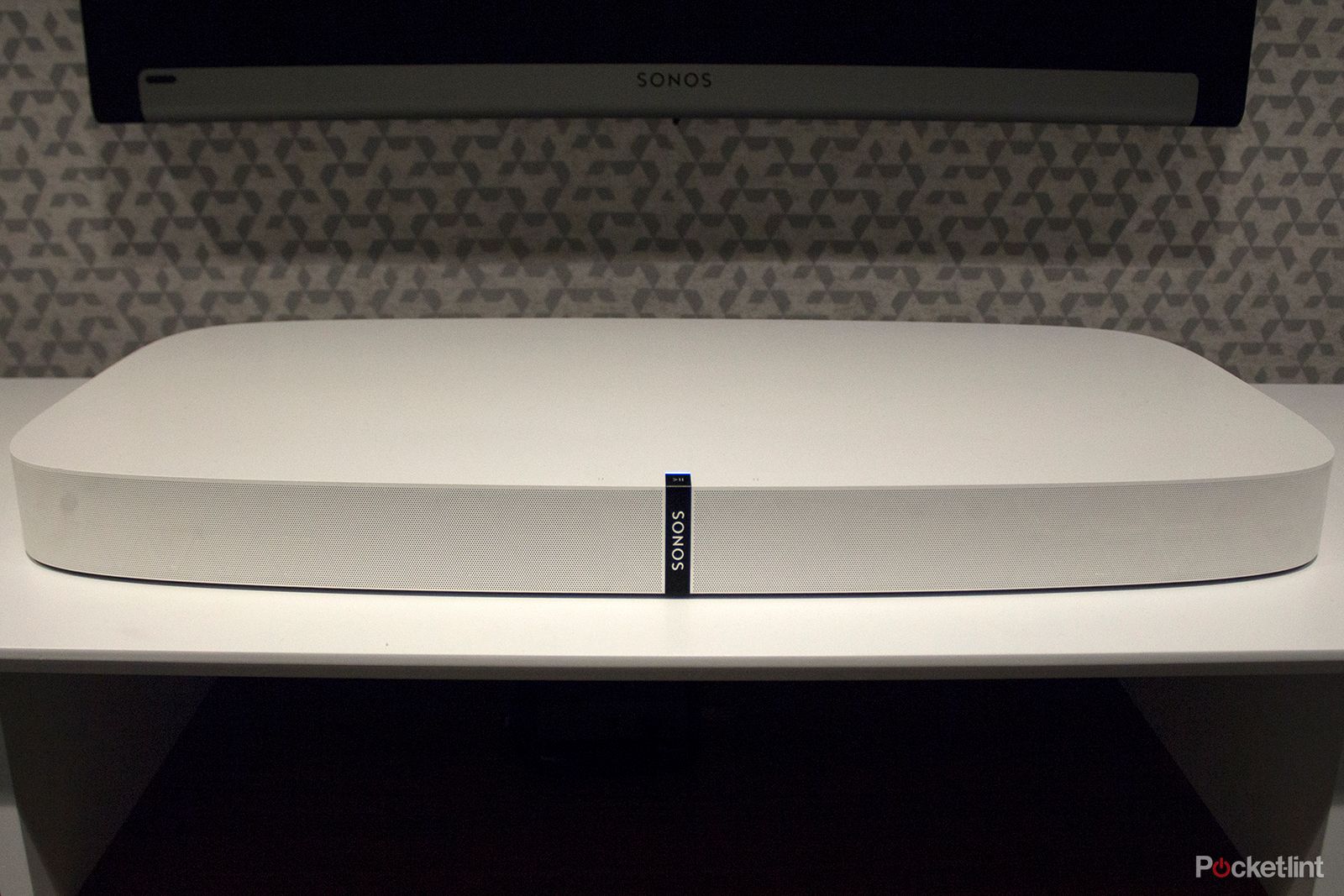
Sonos Playbase - 4.5 / 5
| FOR | AGAINST |
|---|---|
|
|
Design
- Dimensions: 720 x 380 x 58mm; 8.6kgs
- Can accommodate a TV up to 34kg
- No HDMI connection, optical audio connection only
- No Bluetooth connectivity, Wi-Fi/Ethernet only
Sonos has some fabulous speakers in its portfolio, especially the newer ones, but the new Playbase is one of the sleekest. The company said the aim was to allow the Playbase to "disappear into the home" and the new device certainly achieves this when sat beneath a TV. There are no unnecessary details and the slim build allows it to go relatively unnoticed when between a TV stand and the TV itself. If you have a wall-mounted telly then a mounted Playbar is probably a more suitable solution.
The top of the Playbase is smooth to touch, and super flat, while rounded corners give an overall softer finish to an angular TV set sat on top. There are no apparent joins anywhere for a seamless look, with clean lines that make the speaker seem as though it has been created from a single sheet of material.
All the internals are wrapped within a glass-filled polycarbonate exterior to ensure vibrations are kept to a minimum - and despite being essentially plastic, it doesn't look cheap at all.
In tune with 2015's Play:5, as well as the Sonos One, Sonos One SL, Sonos Move and Sonos Beam, the Playbase has capacitive touch controls at the top so you can tap and swipe without having visually unappealing buttons to stare at.
The Sonos tag is positioned at the front of the Playbase, to the centre of the acoustically transparent grille. This grille is made up of over 43,000 holes (apparently, we didn't count) and features a staggered pattern in order to hide the internals of the Playbase better from line of sight. The hole sizes are five different sizes, from the front to the sides, in order to allow better ventilation for the built-in woofer.
At the left of the Playbase is the pairing button (for Wi-Fi, not Bluetooth), while the rear has the connection ports in an inset moulded section, hiding the power cables as much as possible.
There is an Ethernet port, optical audio input and a power supply at the rear, with the Playbase requiring a broadband connection, power and a TV with optical audio output in order to work. Yes, like the Playbar there is no HDMI - which some might not be overly thrilled about.
The Playbase is available in black and white colour options, like most of Sonos' speakers, including the Sonos One, Sonos One SL, Play:5, Play:1 and the Sub, but our favourite is definitely the white as the Playbase's design details are more striking.
Features
- Capacitive touch controls
- Sonos app for wireless control
- Compatible with over 80 music services
- Voice control via Alexa or Google Assistant device
The Playbase connects to the Sonos platform wirelessly, like the rest of the Sonos line up. This means you'll be able to control it via the Sonos app, or select partner apps, like Spotify and Apple Music, and you'll have access to over 100 music services.
It also means that you'll also be able to control Playbase using your voice if you have an Alexa-enabled device, like the Amazon Echo or Echo Dot, or a Google Assistant-enabled device, like the Google Home or Google Home Mini. It's also possible to use the Sonos One, Sonos Move or Sonos Beam if you have any of those as all have Alexa and Google Assistant support built-in.
As the Playbase is a TV speaker as well as another Sonos multi-room speaker, you can also control volume via a TV remote and the Playbase can send TV sound to other Sonos speakers in your setup. For example, group your Play:5 in the kitchen to the Playbase in your living room and you'll be able to hear the football or Strictly Come Dancing while cooking. Or maybe you use your TV to source digital radio.
The Playbase also includes the same features as the Playbar, such as Dialogue Enhancement (which enhances vocal clarity) and Night Mode (which tones down the bass during loud action scenes). Both features are simple to activate, with a simple tap of each respective logo positioned above the Playbase's volume control in the Sonos app.
There are TV Dialogue Settings within the Sonos app too, allowing you to adjust the Audio Delay if you find lip-sync isn't quite on the mark. This can also be done on your TV or set-top box, which might be the better option depending on whether the audio is behind the footage or vice versa. Like other Sonos speakers, it's also possible to adjust equaliser (EQ) settings on the Playbase within the Room Settings of the Sonos app, allowing you to reduce or increase the bass and/or treble. Our Sonos tips and tricks can help you with all of these.
The Playbase is compatible with Trueplay tuning too, which is a software feature that adjusts the sound of the speaker to the specifics of the room. In the case of the Playbase, Playbar and Beam, tuning is done in two stages and requires your input and an iOS device (no Android at the moment).
It takes a few minutes but it is well worth doing - we noticed a significant difference in our home before and after completing the tuning process, both in terms of balance and overall sound quality. It shows how much sound can be tuned via software.
Sound quality
- 10 Class-D amplifiers, 10 driver speaker system
- 5.1 setup with Sonos Sub and two Sonos speakers
- Supports MP3, WMA, AAC, OGG, FLAC, ALAC, AIFF and WAV
- 16-bit support (no Hi-Res 24-bit support)
The Sonos Playbase features ten class-D digital amplifiers, along with a ten-driver speaker system comprising six mid-range drivers, three tweeters and one woofer, all of which have been custom designed for the Playbase.
Sonos said at launch that the result is a sound stage that is much wider than the speaker itself, which our experience confirmed. We've used the Playbase on its own, as well as in a 5:1 setup with a Sonos Sub and two Play:1s - and both setups are impressive. The sound quality from the Playbase is fantastic, as those who own other Sonos speakers will have come to expect.
Naturally, there is more significant bass when the Sub is involved but the Playbase is more than capable on its own, filling the room with sound and delivering an all-in-one solution as both a music speaker and TV sound enhancer. It delivers plenty of bass on its own, foregoing the need for the Sub - which is great seeing as that requires a further £700 investment and some more space.
The Playbase delivers a clear range, natural and crisp dialogue and clear distinction between frequencies, pleasing us in both music speaker terms and as a home theatre speaker. As with the rest of Sonos speakers, the Playbase supports up to CD quality (16-bit), meaning no Hi-Res Audio (24-bit), which the likes of Sony and LG offer within their multi-room systems.
We have never really found this to be an issue as Sonos speakers all offer excellent sound quality, but there are some who will find this disappointing from the music speaker angle of the Playbase.
Sonos app platform
- Easy setup via Sonos app
- Can link to other Sonos speakers for multi-room audio
The Sonos app platform remains the best out there in the multi-room segment, and the company's wireless mesh network technology is excellent for a solid connection. We've had no drop-outs or connection issues in our experience.
The app interface is smooth, with access all compatible streaming apps through the Sonos app, as well as search by artist, track, album, playlist, stations, hosts and podcasts. It's a lot easier than going into each service app individually, though there is control through Spotify too as well as Tidal, which may be useful if either are your go-to preference.
Overall, there are plenty of useful features within the Sonos app, including the ability to set alarms on your speakers, or adding a Sub or surround speakers to your Playbase, all of which are easy to implement with step-by-step guidance. You can read our Sonos tips and tricks feature for all the options on what you can do with a Sonos system.
To recap
If you've got the cash then the Playbase is a have-your-cake-and-eat-it kind of speaker. It's great for music, radically enhances TV audio, blows away the Playbar's more dated design, and is the perfect addition to Sonos's full around-the-home audio package. The Playbase might be late to the soundbase party, but it's what the party has been waiting for.


